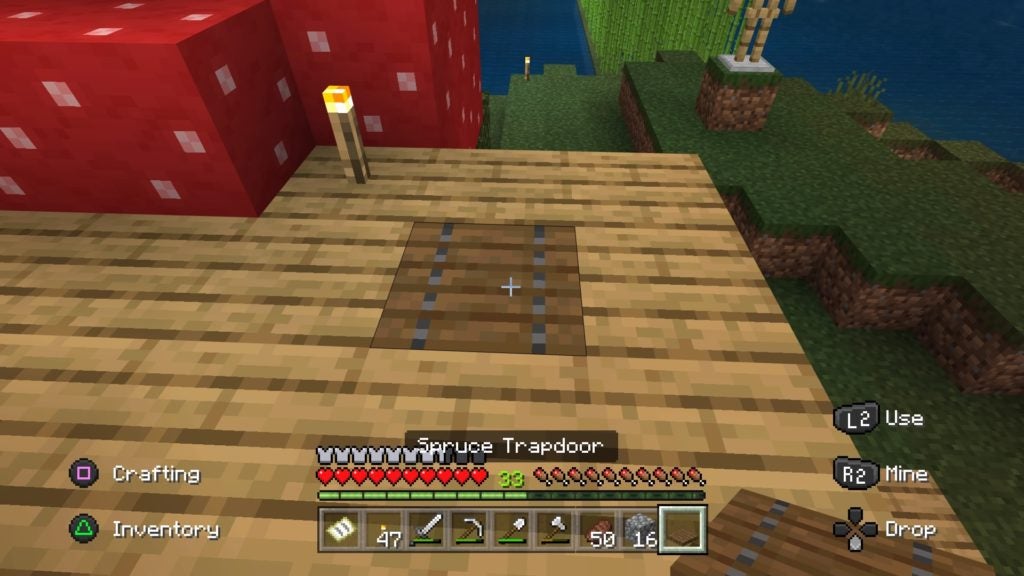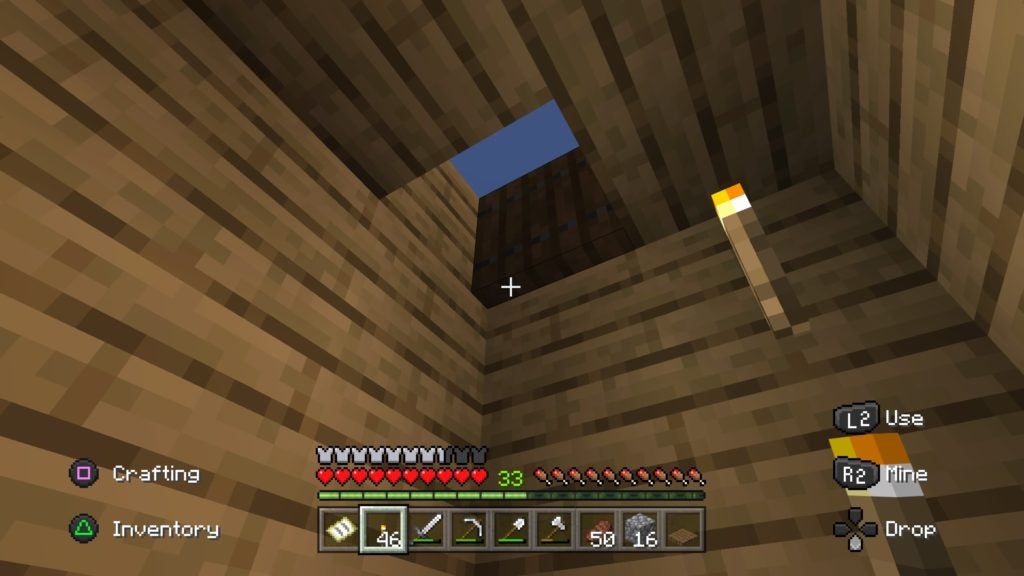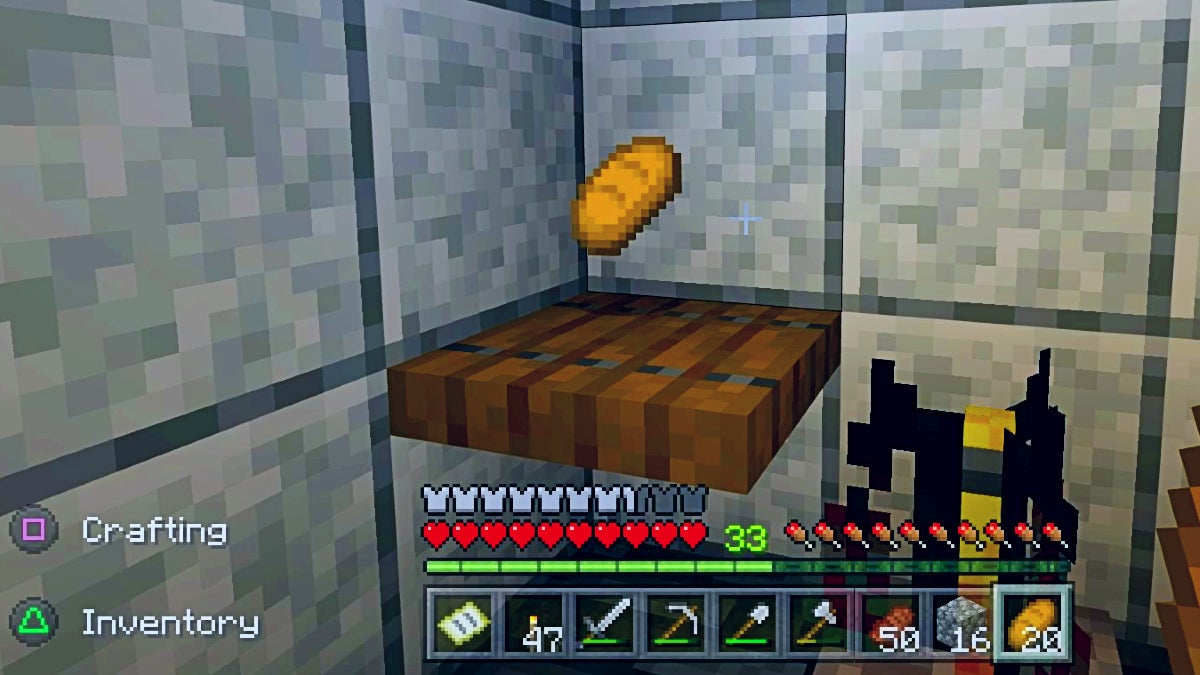There are a surprising number of Trapdoor variants that you can make in Minecraft. There is a kind of Trapdoor for every type of wood as well as an iron variety. Thankfully, they’re all pretty easy to craft.
Table Of Contents
What You Need to Make a Trapdoor

Depending on what kind of Trapdoor you want to make, you’ll need to use a different crafting recipe. For Iron Trapdoors, you will need to use 4 Iron Ingots. Place the ingots on a Crafting Table in a square shape to get 1 Iron Trapdoor.
As for a Wooden Trapdoor, you will need 6 matching Wood Planks. It’s important that they match because, due to there being different variations of Wooden Trapdoor, each one has a different model; and therefore has to have different crafting requirements. On a Crafting Table, fill the bottom and middle rows with the Wood Planks. From that, you’ll get 2 Wooden Trapdoors of the wood type you used to make it (Oak, Spruce, Acacia, etc.).
Every Type of Wooden Trapdoor You Can Make and Where They Can Naturally Spawn
- Oak Trapdoor (Plains Villages, Igloos, and Shipwrecks)
- Dark Oak Trapdoor (Shipwrecks)
- Birch Trapdoor (Shipwrecks)
- Jungle Trapdoor (Desert Villages and Shipwrecks)
- Spruce Trapdoor (Taiga Villages and Shipwrecks)
- Acacia Trapdoor (Shipwrecks [Bedrock Edition-only])
- Crimson Trapdoor (Cannot be found—must be crafted from Crimson Planks)
- Warped Trapdoor (Cannot be found—must be crafted from Warped Planks)
How Trapdoors Work

There are multiple ways that you can place a Trapdoor onto other blocks. Depending on where you’re pointing on a block, you can either place a Trapdoor on the top or the bottom of it. The hinge of the Trapdoor will always be the part that gets attached to the desired block, allowing the Trapdoor to always be able to move.
The Different Ways Trapdoors Can Open
Placing a Trapdoor at the top of a block will cause the Trapdoor to swing down when opened. In this position, the Trapdoor will rest flatly against the side of a block; completely covering it on one side. Alternatively, if you place a Trapdoor on the bottom of a block, it will swing up when opened. This will result in the Trapdoor resting flatly against the attached block as well; similarly to a top-placed Trapdoor. Additionally, you can open and close Trapdoor from any angle as long as you are close enough to it.
How a Trapdoor Shifts Between Being a Solid Block and a Non-solid Block
When you close a Trapdoor, it is a solid block. This means that it acts like any other solid block, such as a placed Dirt or Cobblestone block. You can stand and jump on it in the same way as well.
However, when a Trapdoor is open, it is a non-solid block similar to a Torch or a Lever. This means that you cannot make direct contact with it (unless breaking it with an open hand or tool), allowing for you to potentially pass through the Trapdoor despite it clipping through your character model a bit.
Using Trapdoors in XP Farms and Mob Traps
Despite becoming a non-solid block when opened, mobs will think all Trapdoors are solid—regardless of their state. Usually, mobs will be able to avoid falling from high places due to being able to detect solid and non-solid blocks, however, Trapdoors are an exception to this. Since mobs will always think Trapdoors are solid, you can line ledges and other areas with them to mess with a mob’s block detection.
This has a ton of applications for farming mobs, as you can trick them into falling into any trap you make. In this regard, you can set up an easy XP farm with the use of a high place, Trapdoors, and little else.


